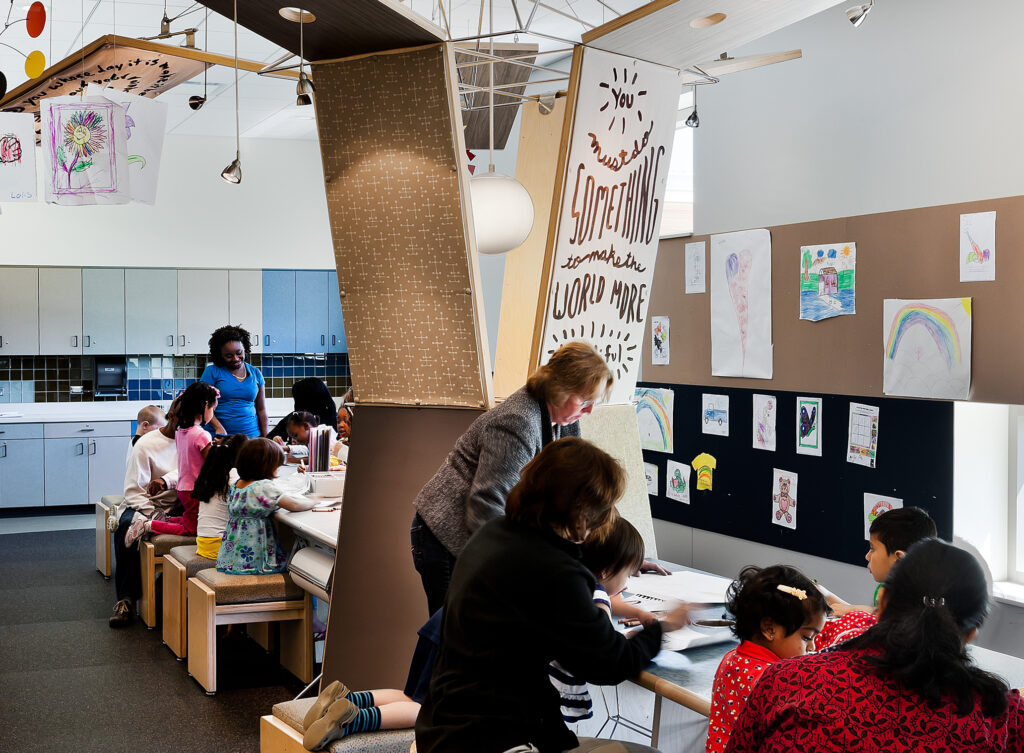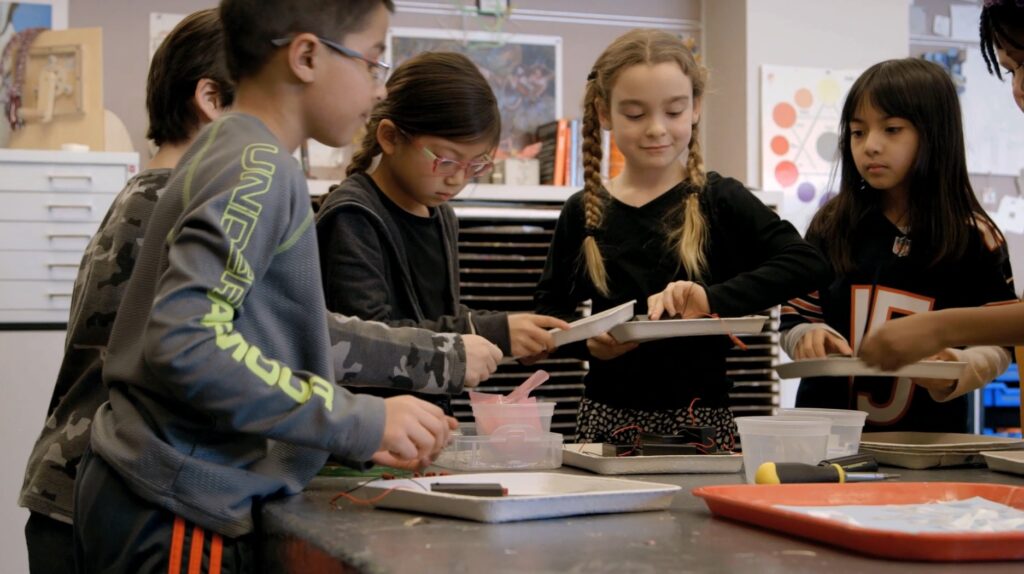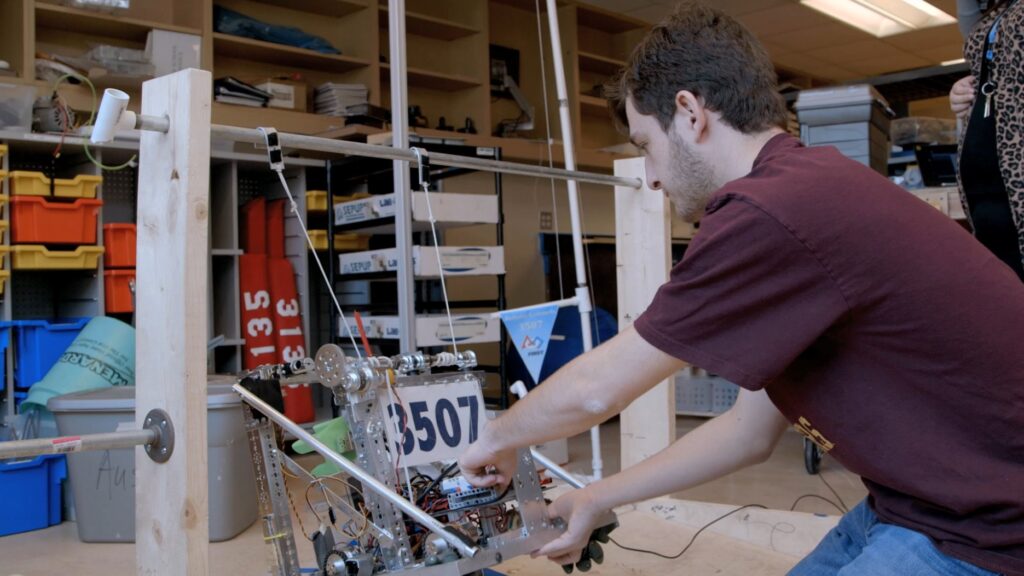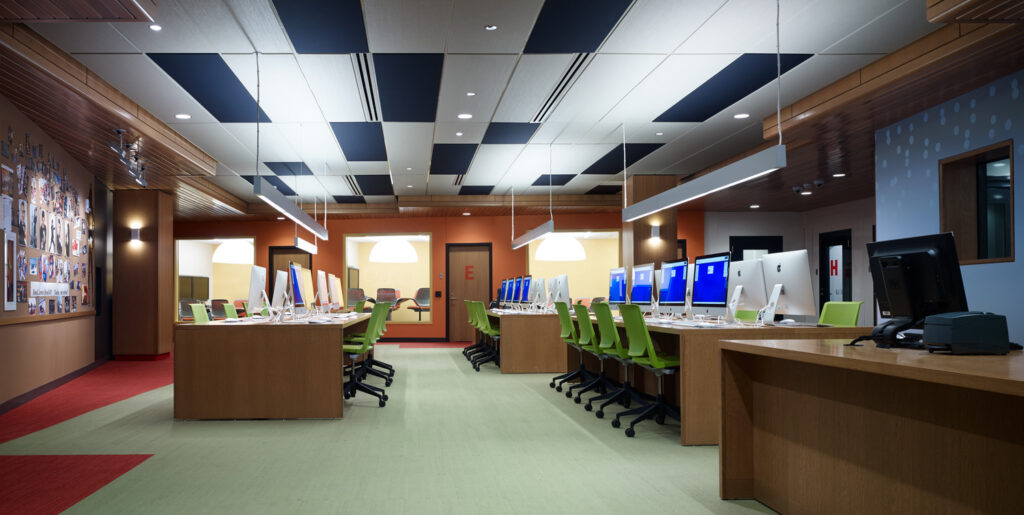
The Makerspace Movement
We are in the midst of a general cultural shift toward content creation. It has origins in education. The “sage on the stage” teaching methodology of the last century was well suited to an industrialized nation. The teacher was the giver of knowledge and students memorized facts. This system was not aimed at creating independent and critical thinkers. Digital technology revolutionized this. Critical thinking, the ability to adapt knowledge in one area to the challenges of something new, has become a necessary skill. Teachers have become more “guide on the side,” facilitating learning. Students have become active as opposed to passive learners—no longer simply consumers of knowledge, but creators toward becoming independent learners and thinkers.

Within libraries, inclusion of Makerspaces represents the manifestation of a shift toward content creation, which take a wide range of forms from craft activity areas to digital media production studios. SNHA designed an ‘uber’ version of a digital media production studio (Studio 300) for Fountaindale Public Library. The shift toward content creation is more than a fad—it reflects a cultural change that will continue to shape public library services.
Makerspaces— Why now?
In an age when smartphones are designed to dominate our attention, we risk depriving young minds of practical problem-solving opportunities. Future employment opportunities will require the application of STEM/STEAM principles to roles that have yet to be created. A culture shift focused less on camping in line for the latest technology, towards a self-empowered “I could do that” attitude is revolutionizing learning across the country.

8 Reasons the Makerspace Movement is Here to Stay
1. Stem/Steam Skills – New careers and job titles are increasingly focused on Science, Technology, Engineering, Art, and Math-based skills. Makerspaces allow students to explore these topics at foundational learning stages.
2. Independent Learning – Parents often notice that when their children become engrossed in a subject, they pursue additional learning opportunities outside the classroom. Makerspaces provide young minds unstructured project-based learning opportunities to support their curiosity.
3. Design Intelligence – Makerspaces foster design intelligence that helps us to adapt knowledge in one area to new areas. Makerspaces are a perfect forum for exploring visual-based projects while learning how human-centered design affects all aspects of our daily lives.
4. Hands-On Collaboration – Makerspaces also foster collaboration, allowing young people to cooperate on projects, each focusing on his or her strengths while learning from peers.
5. Universal Accessibility – The need for accessible learning is a key factor in support of the Maker Movement. Makerspaces allow the individual to use their own adaptive skills to tailor learning to their own styles and abilities.
6. Supporting Culture – Maker Culture is strong and growing; learners take pride in the institutions that provide opportunities to showcase their talents and explore new ideas. This culture can foster greater support for community services and organizations that invest in Makers.
7. Bridging Generations – The breadth of Maker activities, from sewing and crafts to digital production, bridge generational skill sets. Makerspaces foster cross-generation interaction.
8. Fostering Leadership – Makerspaces foster confidence through success. Makers of all ages exhibit leadership qualities cultivated by their ability to create and collaborate.

